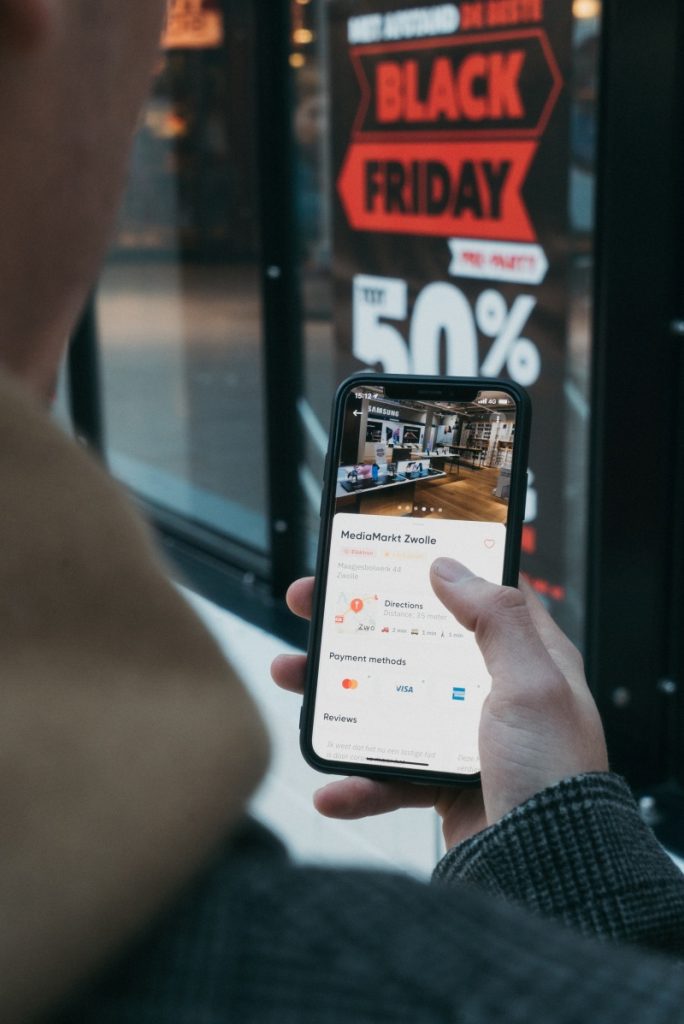In today’s digital age, consumers are increasingly turning to their mobile devices to shop online, making it more important than ever for ecommerce businesses to prioritize mobile-first design. Mobile ecommerce website development means designing an online shopping website with a focus on the mobile user experience, ensuring that the website is optimized for smaller screens, touch gestures, and slower connection speeds.
In this article, we’ll explore why mobile-first ecommerce website development matters and provide some tips on how to achieve it.

Why Mobile Ecommerce Website Development Matters
Mobile devices have overtaken desktop computers as the primary means of accessing the internet, and this trend is only set to continue. In fact, according to Statista, mobile ecommerce sales are projected to account for 72.9% of total ecommerce sales by 2021. This means that ecommerce businesses need to prioritize mobile responsive design to meet the needs of their mobile users.
Here are some key reasons why mobile optimised ecommerce design matters:
1. Improved User Experience
Designing an ecommerce website with mobile users in mind can significantly improve the user experience. Mobile-first design prioritizes simplicity, speed, and ease of use, which are all key factors in providing a positive user experience. This can lead to increased customer satisfaction and loyalty, as well as higher conversion rates.
2. Increased Mobile Traffic
As more and more consumers turn to their mobile devices to shop online, ecommerce businesses that prioritize mobile design are likely to see an increase in mobile traffic. This can lead to higher engagement, more repeat visits, and ultimately, increased sales.
3. Better Search Engine Rankings
Google has made it clear that mobile design is a priority, and websites that are optimized for mobile devices are more likely to rank higher in search engine results pages. This means that ecommerce businesses that prioritize mobile-first design are more likely to attract organic traffic from search engines.
How to Achieve Mobile Prioritized Ecommerce Design
Now that we’ve established why mobile ecommerce design matters, let’s take a look at how to achieve it. Here are some tips:
1. Start with a Mobile Design Mindset
When designing an ecommerce website, it’s important to start with a mobile-first mindset. This means designing for mobile devices first, and then scaling up to larger screens. This approach ensures that the website is optimized for the smallest screens, which can be the most challenging to design for.
2. Prioritize Speed
Mobile users expect websites to load quickly, and a slow-loading website can lead to high bounce rates and lower engagement. To achieve mobile ecommerce website development, it’s important to prioritize speed by optimizing images, minimizing code, and using caching and other performance optimization techniques.
3. Use Responsive Design
Responsive design is a technique that allows a website to adapt to different screen sizes and devices. This is essential for mobile ecommerce design, as it ensures that the website is optimized for all devices, including smartphones, tablets, and desktop computers.
4. Simplify Navigation
Mobile users don’t have the luxury of a large screen and a mouse, so it’s important to simplify navigation for mobile devices. This means using clear and concise labels, minimizing the number of clicks required to make a purchase, and providing easy access to important pages such as the shopping cart and checkout.
5. Optimize for Touch
Mobile devices are operated using touch gestures, so it’s important to optimize the website for touch. This means using larger buttons and links, avoiding small fonts and text links, and ensuring that the website is easy to use with one hand.
6. Test and Iterate
Finally, it’s important to test and iterate on your mobile-first ecommerce design to ensure that it meets the needs of your mobile users. This means testing the website on a variety of devices, using analytics to track user behavior, and making changes based on user feedback.

In conclusion, mobile-first ecommerce website development is no longer a luxury, but a necessity for online shopping businesses looking to stay ahead of the curve. By prioritizing speed, simplicity, and ease of use, ecommerce businesses can improve the user experience, increase mobile traffic, and attract more organic search traffic.
By using responsive design, simplifying navigation, optimizing for touch, and testing and iterating on your design, you can achieve mobile-first ecommerce design and provide your mobile users with a positive and engaging shopping experience.

